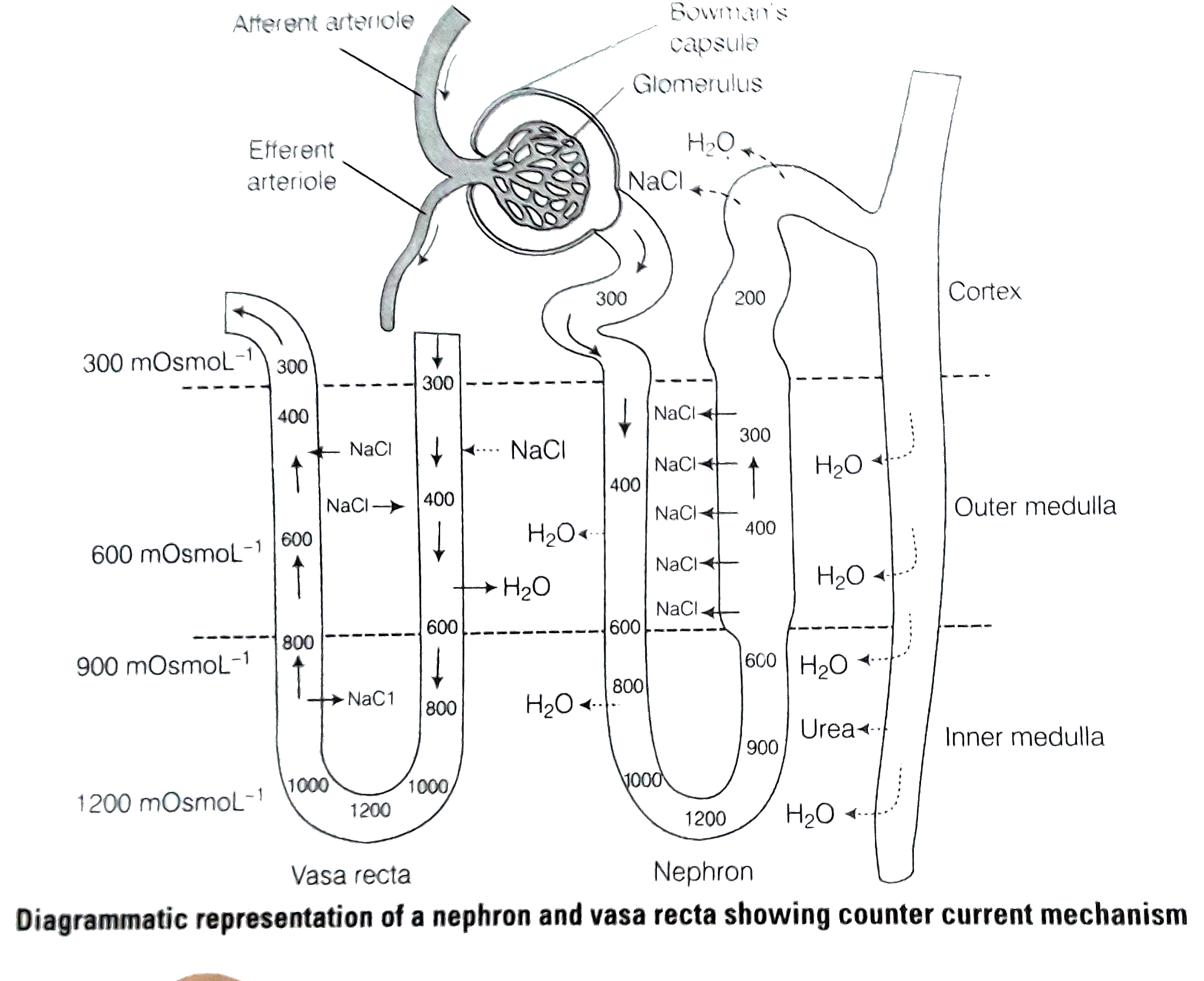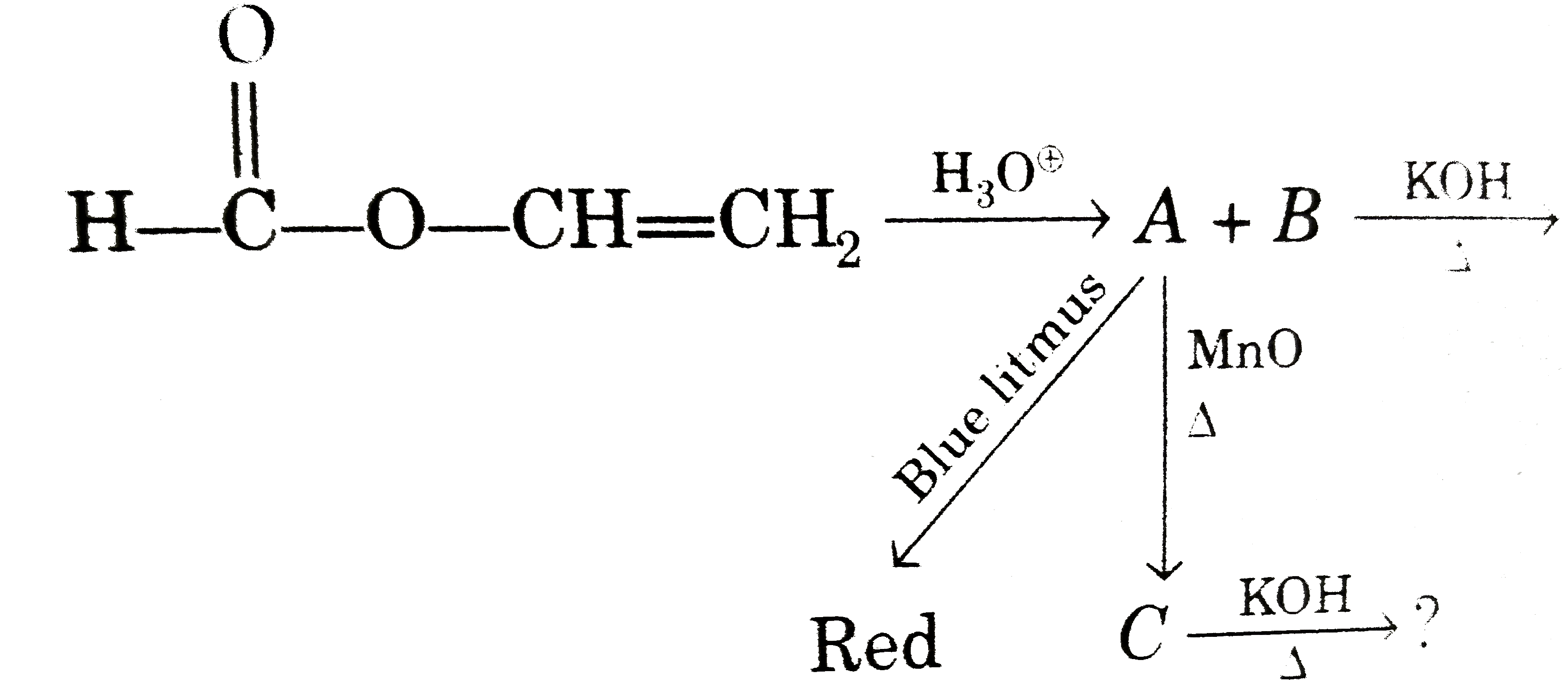Explain the mechanism of formation of concentrated urine in mammals.
Video Solution
Text Solution
Mammals have the ability to produce concentrated urine. The loop of Henle and vasa recta, play a significant role in it, which can be discussed as follows
(i) The proximity between the Henle's loop and vasa recta, as well as the counter current (formed due to the flow of filtrate in two limb's of Henle's loop in opposite direction) help in maintaining an increasing osmolarity towards the inner medullary interstitium, i.e., from 300 mOsmoL−1 in the cortex to about 1200 mOsmoL−1 in the inner medulla.

(i) This gradient is caused mainly due to NaCl and urea. NaCl is transported by the ascending limb of Henle's loop, which is exchanged with the descending limb of vasa recta.
(iii) NACl is returned to the interstitium by the ascending portion of vasa recta.
(iv) Similarly, a small amount of urea enters the thin segment of the ascending limb of Henle's loop. which is transported back to the interstitium by the collecting tubule.
(v) This special arrangement of Henle's loop, and vasa recta, is called the counter current mechanism.
(vi) The counter current exchange reduces the rate of dissipation. This, inturn reduces the rate at which the current must pump Na+ to maintain any given gradient.
(vii) Presence of such interstitial gradient helps in an easy passage of water from the collecting tubule thereby concentrating the filtrate (urine).
(viii) Human kidneys can produce urine nearly four times concentrated than initial filtrate formed.
|
Updated on:21/07/2023
Topper's Solved these Questions
- BOOK - NCERT EXEMPLARCHAPTER - EXCRETORY PRODUCTS AND THEIR ELIMINATION EXERCISE - Short Answer Type Questions9videos
EXCRETORY PRODUCTS AND THEIR ELIMINATION
- BOOK - NCERT EXEMPLARCHAPTER - DIGESTION AND ABSORPTION EXERCISE - Long Answer Type Questions5videos
DIGESTION AND ABSORPTION
- BOOK - NCERT EXEMPLARCHAPTER - LOCOMOTION AND MOVEMENTEXERCISE - Long Answer Type Questions6videos
LOCOMOTION AND MOVEMENT
Similar Questions
Knowledge Check
- Question 1 - Select One

Mechanism of formation of A and B isAAAC2BAAC1CAAL1DAAL2 - Question 2 - Select One

Mechanism of formation of A and B is :AAAC2BAAC1CAAL1DAAL2 - Question 3 - Select One
Which hormone cause formation of concentrated urine during water scarcity?
AADHBAdrenalineCThyroxineDOxytocin
Explain the mechanism of compost formation.
View SolutionMechanism OF Urine Formation
View SolutionWhich hormone cause formation of concentrated urine during water scarcity?
View SolutionThe mechanism of urine formation in nephron involves
View SolutionThe mechanism of urine formation in nephron involves
View Solution

